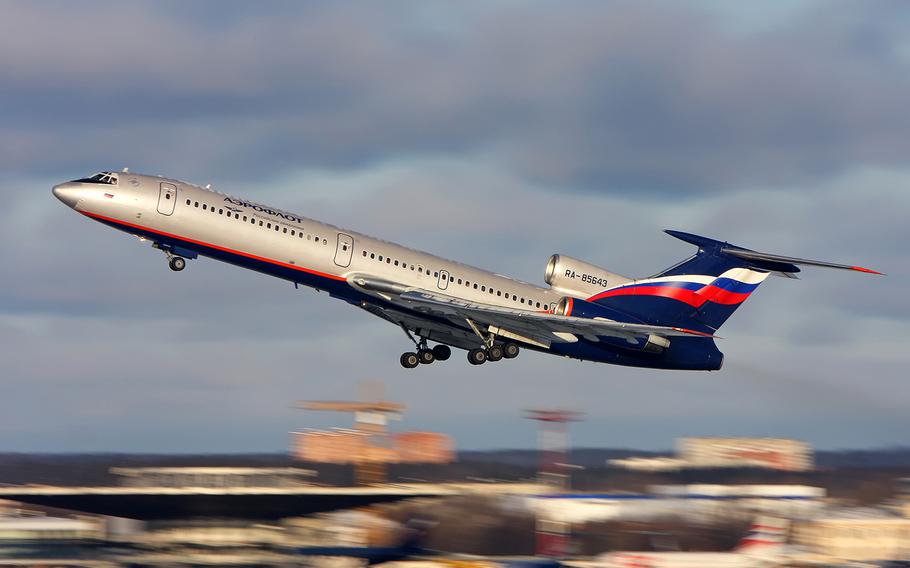
Aeroflot Tupolev Tu-154 (Alexander Mishin)
WASHINGTON — The Pentagon downplayed a request Monday by Russia to fly a spy plane over the continental United States, noting the flights are part of a regular treaty meant to prevent miscalculation about military threats.
The flights are allowed under the 2002 Open Skies Treaty, which permits the 34 countries that signed it to conduct surveillance flights of each other’s military installations or nuclear facilities.
On Monday, Russia asked the Open Skies Consultative Commission, the Vienna group that oversees the treaty, for permission to conduct another round of flights. Once approved, the flights could occur over the United States or the other 33 member nations. Russia asked to conduct the flights with an upgraded digital sensor that it would add to its Tupelov Tu-154 medium-range jet for the surveillance. The Tu-154 looks like a commercial airliner.
The commission has 120 days to consider Russia’s request.
On Monday, Pentagon spokesman Capt. Jeff Davis downplayed concern about the request, saying if the new sensor and flights are approved by the commission, any flight plan would have to be filed in advance and any imagery Russia collected would have to be shared publically with the commission.
“This was signed in a day of wet film, and wet film is no longer made. It needs to be updated to digital and that is what this is about,” Davis said. “We have to remember that while we have pretty good intelligence on a lot of the world, a lot of other countries don’t necessarily have that great of intelligence on us. So in the interest of transparency and prevention of miscalculation … sometimes it’s worthwhile to allow them to have a look at what you are doing or what you are not doing.”
Lt. Col. Michelle Baldanza, a Pentagon spokeswoman who handles Russian issues, said Russia made a similar request in 2014. At that time, Russian forces invaded Crimea. Along with the civil war in Syria, U.S.-Russian tension has since escalated. Baldanza did not know Monday whether the 2014 request came before or after the invasion, or whether Russia executed those requested flights.
Baldanza said the member nations have announced and conducted more than 1,200 overflights since the treaty was implemented in 2002. The United States used the treaty to observe military activities in Ukraine, after Russia invaded Crimea in 2014. She said the last Russian flight over the United States took place December. The United States last flew over Russia in November.
Some military and intelligence officials have expressed concerns.
“The open skies construct was designed for a different era,” Lt. Gen. Vincent Stewart, director of the Defense Intelligence Agency, told lawmakers when asked about the Russian overflights during a congressional hearing. “I’m very concerned about how it’s applied today.”
Robert Work, deputy secretary of defense, told Congress: “We think that they’re going beyond the original intent of the treaty and we continue to look at this very, very closely.”
Steve Rademaker, former assistant secretary of state for the bureau of arms control and the bureau of international security and nonproliferation, told Congress at a hearing on security cooperation in Europe in October that Russia complies with the Open Skies Treaty, but has “adopted a number of measures that are inconsistent with the spirt” of the accord.
The treaty, for instance, obligates each member to make all of its territory available for aerial observation, yet Russia has imposed restrictions on surveillance over Moscow and Chechnya and near Abkhazia and South Ossetia, he said. Russian restrictions also make it hard to conduct observation in the Kaliningrad enclave, said Rademaker, who believes Russia is “selectively implementing” the treaty “in a way that suits its interests.”
The Associated Press contributed to this story.